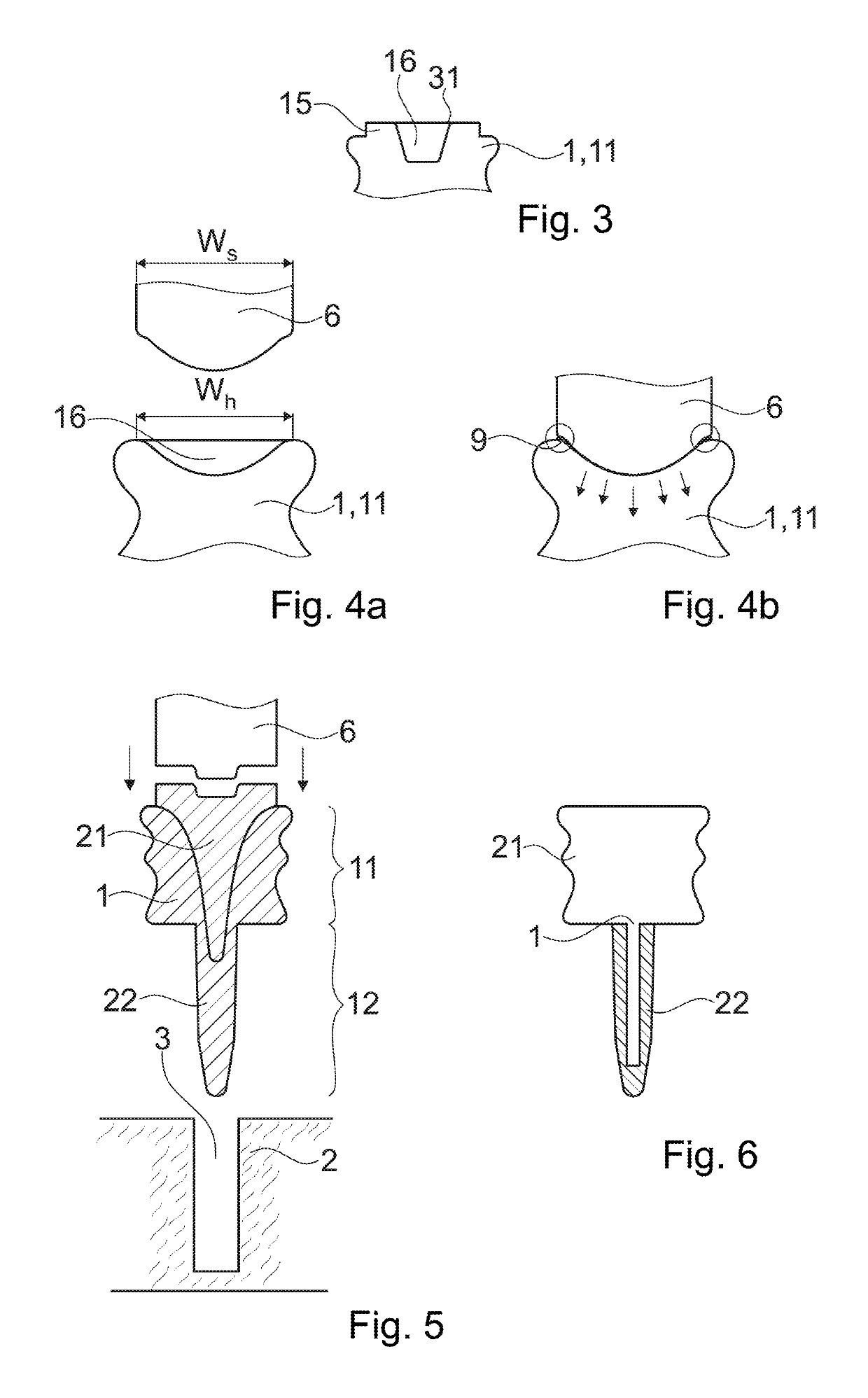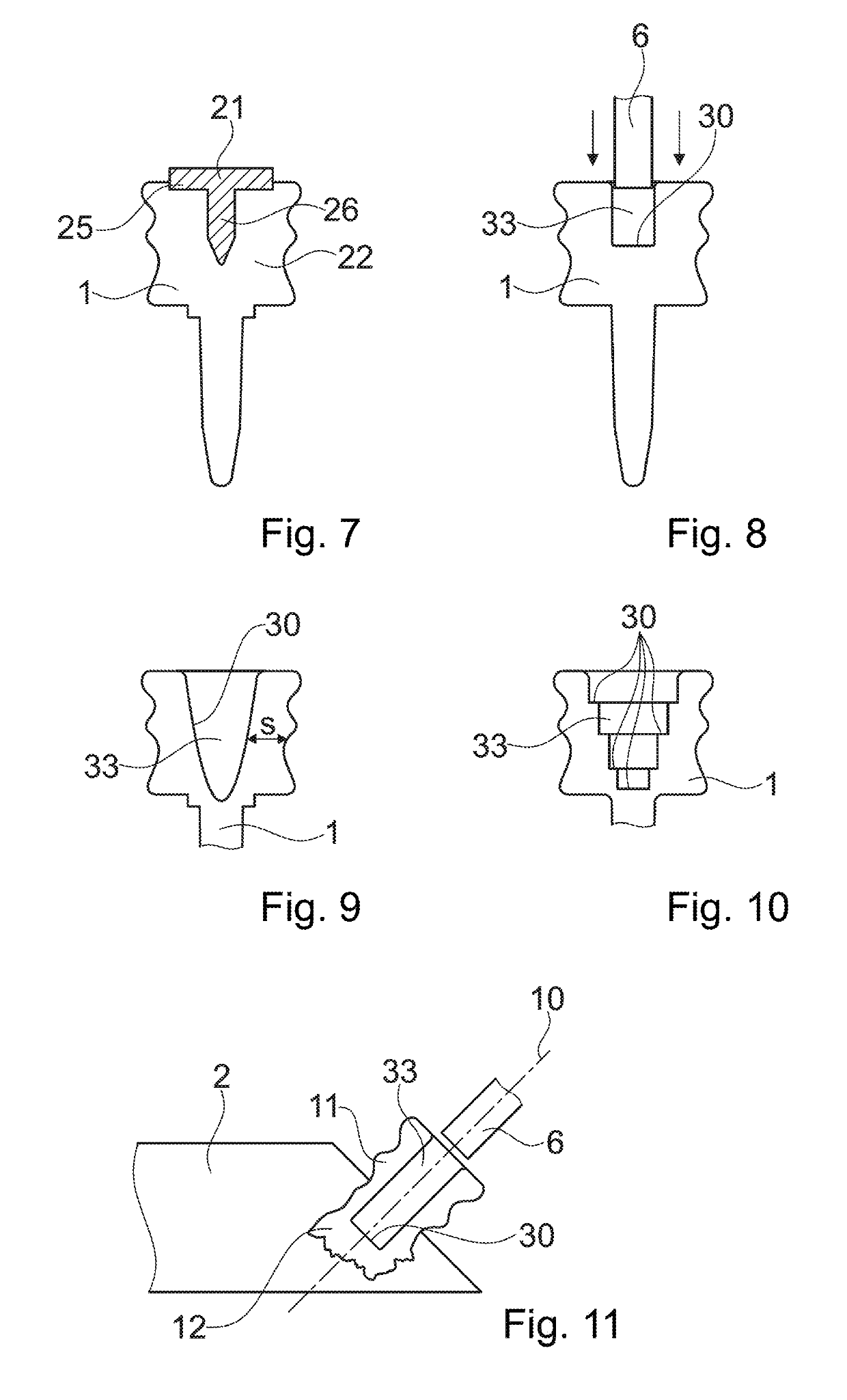Anchoring a joining element in an object
a technology of joining elements and objects, applied in the field of mechanical engineering and construction, can solve the problems of insufficient stability, hard or impossible to properly introduce the male parts, and the joints between different parts are difficult to achieve, and achieve the effect of facilitating injection molding of liquefiable parts and enhancing strength
- Summary
- Abstract
- Description
- Claims
- Application Information
AI Technical Summary
Benefits of technology
Problems solved by technology
Method used
Image
Examples
Embodiment Construction
[0163]A joining element 1 as illustrated in FIG. 2a includes a head portion 11 and an anchoring portion 12. Between the head portion and the anchoring portion, a distally facing shoulder 18 is formed, which shoulder serves as stop face in the anchoring process described hereinafter.
[0164]The joining element 1 may be essentially symmetric with respect to a rotation around its axis 10, with the possible exception of energy concentrating elements (not shown in FIG. 2a), such ribs or humps, of an outer surface of the anchoring portion 12.
[0165]The head portion 11 has a lateral outer surface that is shaped to engage into a corresponding structure of a female part of a further object so that the object into which the joining element is anchored and the further object may be assembled to one another. Especially, the lateral outer surface has a structure 13 that makes a positive-fit connection with the female part possible, in a manner that forces in axial directions (with respect to the ax...
PUM
| Property | Measurement | Unit |
|---|---|---|
| aspect ratio | aaaaa | aaaaa |
| frequency | aaaaa | aaaaa |
| frequency | aaaaa | aaaaa |
Abstract
Description
Claims
Application Information
 Login to View More
Login to View More - R&D
- Intellectual Property
- Life Sciences
- Materials
- Tech Scout
- Unparalleled Data Quality
- Higher Quality Content
- 60% Fewer Hallucinations
Browse by: Latest US Patents, China's latest patents, Technical Efficacy Thesaurus, Application Domain, Technology Topic, Popular Technical Reports.
© 2025 PatSnap. All rights reserved.Legal|Privacy policy|Modern Slavery Act Transparency Statement|Sitemap|About US| Contact US: help@patsnap.com



